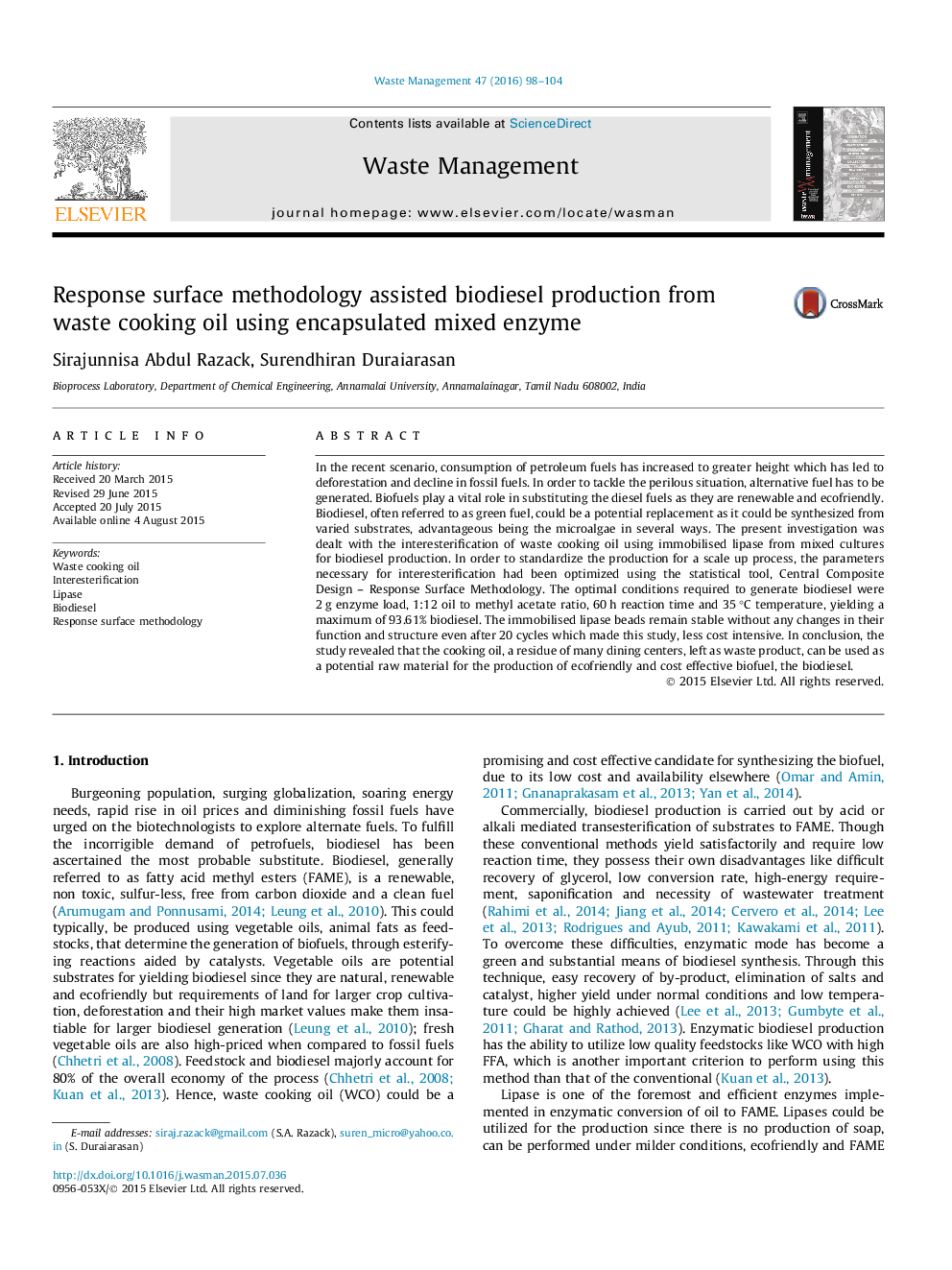| کد مقاله | کد نشریه | سال انتشار | مقاله انگلیسی | نسخه تمام متن |
|---|---|---|---|---|
| 4471334 | 1315017 | 2016 | 7 صفحه PDF | دانلود رایگان |
• Mixed lipase enzymes were successfully immobilised using sodium alginate.
• The interesterification was successfully optimized using RSM software.
• The immobilised enzyme beads were repeatedly used 20 times without significant loss of activity.
• Highest biodiesel yield was obtained as 93.61% from WCO.
In the recent scenario, consumption of petroleum fuels has increased to greater height which has led to deforestation and decline in fossil fuels. In order to tackle the perilous situation, alternative fuel has to be generated. Biofuels play a vital role in substituting the diesel fuels as they are renewable and ecofriendly. Biodiesel, often referred to as green fuel, could be a potential replacement as it could be synthesized from varied substrates, advantageous being the microalgae in several ways. The present investigation was dealt with the interesterification of waste cooking oil using immobilised lipase from mixed cultures for biodiesel production. In order to standardize the production for a scale up process, the parameters necessary for interesterification had been optimized using the statistical tool, Central Composite Design – Response Surface Methodology. The optimal conditions required to generate biodiesel were 2 g enzyme load, 1:12 oil to methyl acetate ratio, 60 h reaction time and 35 °C temperature, yielding a maximum of 93.61% biodiesel. The immobilised lipase beads remain stable without any changes in their function and structure even after 20 cycles which made this study, less cost intensive. In conclusion, the study revealed that the cooking oil, a residue of many dining centers, left as waste product, can be used as a potential raw material for the production of ecofriendly and cost effective biofuel, the biodiesel.
Journal: Waste Management - Volume 47, Part A, January 2016, Pages 98–104
